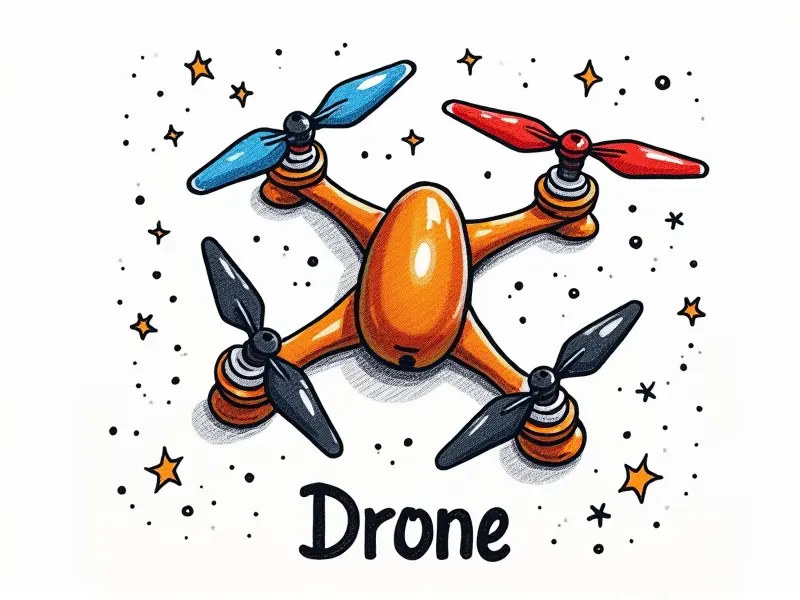How to fly an iFlight drone?

Mastering FPV Racing with iFlight Drones
Flying a drone can be exhilarating, especially when it comes to first-person view (FPV) racing. iFlight drones are renowned for their speed and maneuverability, making them perfect for FPV enthusiasts looking to push the boundaries of what's possible in aerial racing. This guide will walk you through the essential steps to get started with flying an iFlight drone.
Essential Skills for Flying iFlight Drones
To become proficient at flying iFlight drones, there are several key skills you need to master:
- Hand-Eye Coordination: FPV racing requires quick reflexes and the ability to react instantly to what your drone sees.
- Spatial Awareness: Understanding how your drone moves in three-dimensional space is crucial for navigating tight corners and avoiding obstacles.
- Control Precision: Fine-tuning your control inputs will help you maintain stability and responsiveness during high-speed maneuvers.
Beginner's Tips for Flying iFlight Drones
If you're new to FPV racing, here are some tips to get started:
- Start Slow: Begin in a controlled environment with fewer obstacles and gradually increase the difficulty.
- Practice Basic Maneuvers: Focus on mastering basic flight patterns before attempting more complex moves.
- Use Training Modes: Many iFlight drones come with training modes that limit speed or provide stability assistance to help you learn safely.
Navigate Like a Pro with iFlight Drones
Flying an iFlight drone requires excellent navigation skills. Here are some tips for navigating like a pro:
- Learn Map Reading: Familiarize yourself with the layout of your racing course before taking off.
- Practice Quick Turns: Master sharp turns and high-speed maneuvers to navigate through tight spaces efficiently.
- Use Visual Cues: Pay attention to visual markers on the ground or in the air to guide your flight path accurately.
Quick Start Guide: Flying iFlight Drones
Getting started with an iFlight drone is straightforward. Follow these steps for a smooth takeoff:
- Charge Your Battery: Ensure your battery is fully charged before beginning.
- Install the Propellers: Attach the propellers securely to each motor.
- Connect the FPV Gear: Set up your goggles and transmitter for a clear view.
- Calibrate Your Controls: Adjust your transmitter settings for optimal responsiveness.
iFlight Drone Controls Explained Simply
Understanding the controls is crucial for flying an iFlight drone. Here’s a breakdown of the basic controls:
- Ailerons (Roll): Control left and right movement.
- Elevators (Pitch): Control up and down movement.
- Rudder (Yaw): Control rotational movement around the vertical axis.
- Throttle: Control ascent and descent.
Perfecting Your iFlight Drone Flying Techniques
To become a skilled FPV racer, you need to perfect your flying techniques. Here are some advanced tips:
- Maintain Consistent Speeds: Keep your drone at a steady speed for better control and maneuverability.
- Practice Hovering: Perfect the art of hovering in place to improve stability during complex maneuvers.
- Master Reverse Flight: Learn how to fly backward with precision to navigate tight spaces effectively.
Top Tricks for Flying iFlight Quadcopters
Show off your skills by incorporating these top tricks into your FPV racing routine:
- Cuban 8s: Execute a figure-eight pattern in mid-air.
- Inverted Flight: Fly upside down for dramatic effect and added challenge.
- Helicopter Spin: Perform a rapid spin while maintaining altitude.
Smooth Flying Techniques for iFlight Models
Maintaining smooth flight is essential for both performance and safety. Here are some techniques to help you fly smoothly:
- Avoid Sudden Movements: Gradual control inputs minimize the risk of losing stability.
- Use Fine-Tuned Adjustments: Make small, precise adjustments for better control and smoother flight.
- Practice Slow Flight: Flying at slower speeds can help you develop a more controlled flying style.
Advanced Techniques for iFlight Drone Mastery
To truly master your iFlight drone, delve into these advanced techniques:
- Battery Management: Learn to optimize battery usage for longer flight times and better performance.
- Custom Firmware: Explore custom firmware options to unlock additional features and capabilities.
- Precision Landing: Perfect the art of landing your drone with pinpoint accuracy.
Optimal Settings for Smooth iFlight Drone Flights
Tuning your settings can significantly improve flight performance. Here are some optimal settings to consider:
- Frame Rate: Adjust the frame rate in your FPV goggles for a smoother and more responsive view.
- Throttle Curve: Fine-tune the throttle curve for better control at low and high speeds.
- Deadband Settings: Configure deadbands to eliminate unnecessary movements during flight.
Conclusion
Flying an iFlight drone is a thrilling experience that requires dedication, practice, and patience. By mastering the essential skills, learning from beginner tips, navigating like a pro, and perfecting your techniques, you can become a skilled FPV racer. Keep experimenting with advanced settings and tricks to continually improve your performance and enjoy the exhilaration of flying an iFlight drone.

